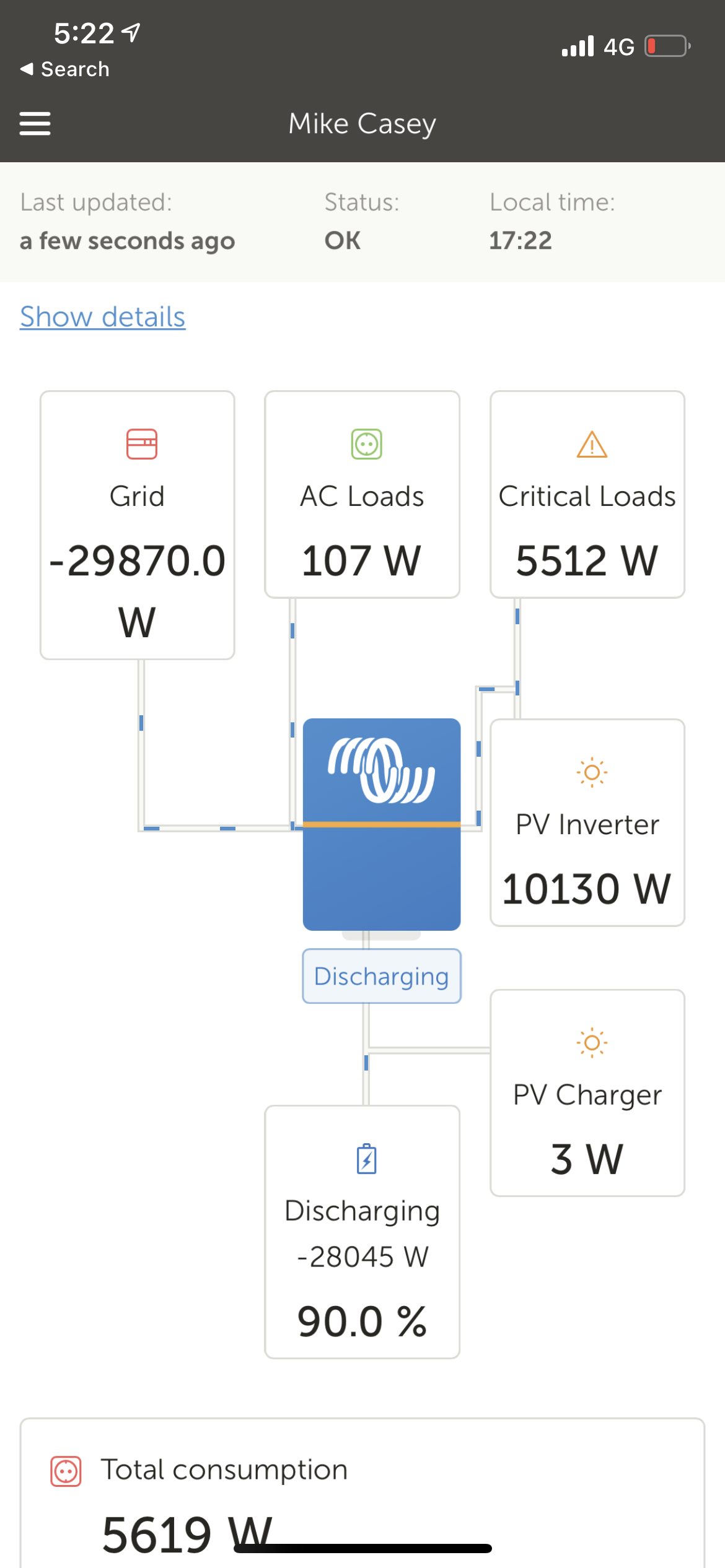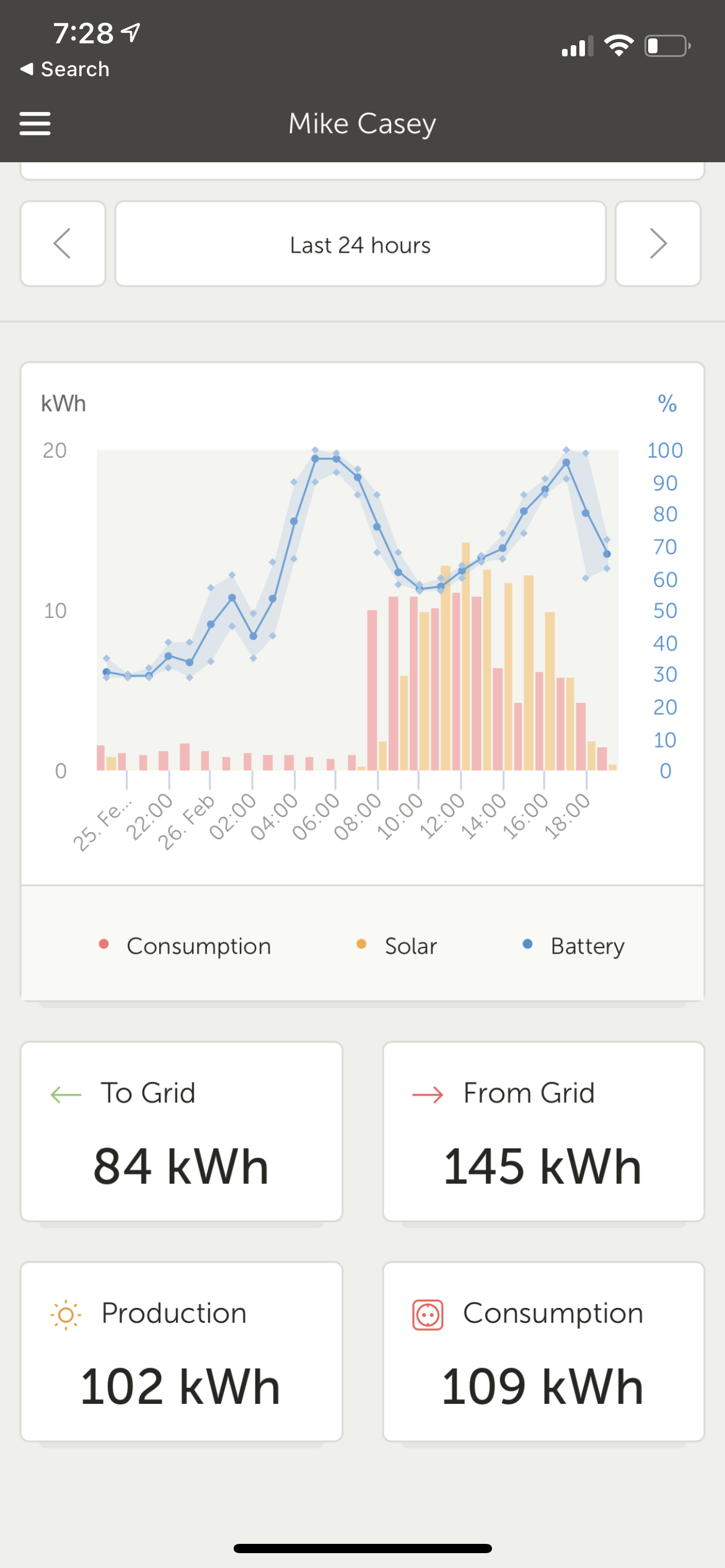 I’ve written my own custom controller to set the grid set point based on spot price here in New Zealand which has been through the roof recently because of a gas shortage.
I’ve written my own custom controller to set the grid set point based on spot price here in New Zealand which has been through the roof recently because of a gas shortage.
ive been reviewing the Victron aggregated logs and have always assumed that grid input + production ~= grid export plus consumption although this isn’t the case. I was wondering if someone could explain where the remaining kWh go? I know inverters are 95% efficient but that doesn’t account from missing kWh in my mind anyway.
In the first photo you can see around 4-5kw is missing from live view based on discharge amount of battery and pv production
In the second photo you can see that this seems to also be the case in data aggregated over the last 24 hours. I consumed or exported 193kwh but produced or imported 246kwh.
Thanks for your help!

